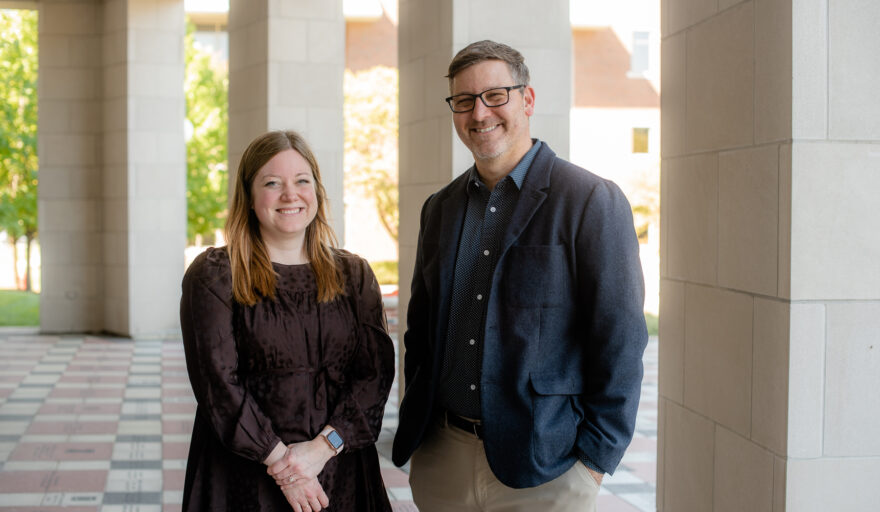Helping to Stem the Tide
Rachel Garthe, Associate Professor, Undergraduate Research Program Coordinator and Doug Smith, Professor, Director of Center for Prevention Research and Development

Violence is a public health crisis and a leading cause of death for people in Illinois. The School of Social Work is spearheading efforts to curb and prevent it.
Two recent studies involving numerous state agencies and led by the School of Social Work have led to a four-year violence prevention plan and funding goals and priorities for the Illinois Criminal Justice Information Authority (ICJIA), which funded the studies.
For both studies, Associate Professor Rachel Garthe is principal investigator and Professor Doug Smith is co-investigator. Garthe and Smith were two of the authors who wrote a Statewide Violence Prevention Plan: 2020-2024 for the ICJIA that outlined program reviews and strategies, a needs assessment of violence in Illinois, and recommendations for funding.
Study Findings
“Across most forms of violence, Illinois has higher rates of violence comparted to the rate in the United States,” says Garthe, who is also undergraduate research program coordinator for the School and directs the Violence Prevention Research Lab.
“For example, about one in four youth reported being bullied in the past year, about one in five youth reported engaging in physical fighting in the past year, and about one in three women experience sexual violence or violent victimization by an intimate partner in their lifetime.”
In addition:
- some of the groups at highest risk for violence include racial, ethnic, sexual, and gender minorities;
- youth who experience violence are at a significantly higher risk for depressive feelings, suicidal ideation, and substance use, compared to those who had not experienced violence; and
- violence appears to be less of a concern to community leaders and community-elected officials than is warranted.
“Our finding on the perception of community violence comes from surveying violence prevention and intervention staff,” Garthe explains. “This suggests that staff perceive community leaders and officials to not be as motivated to work together to prevent or address violence. In order for us to see impacts on violence, we need to take a collaborative, community effort to prevent violence, with buy-in from residents and community leaders and officials. Communities across Illinois have some work to do in increasing their commitment to preventing violence.”
Five Prevention Goals
Garthe also notes that organizations and schools may not be implementing evidence-based programs. “Thus, we may be having a muted impact on violence,” she says. “We need to do a better job of making sure organizations are knowledgeable about evidence-based practices or about building evidence for their programs—for example, participating in evaluation trainings.”
Based on the data collected and analyzed, the planning group created five violence prevention goals for ICJIA funding:
- Stop violence and promote safety
- Support children, youth, and families by emphasizing programs that foster social connectedness and belonging
- Advance equity
- Support health
- Promote collaboration across state, municipal, and community-based agencies
“These goals are informing funding opportunities through the Illinois Criminal Justice Information Authority,” Garthe says. “ICJIA funds millions of dollars in violence prevention programming, and these goals guide what they want to focus on for the next few years.”
“Strong First Step”
She adds that this is one of the first statewide plans that reviews and consolidates many forms of violence, including child maltreatment, youth violence, juvenile violence offenses that result in detention, adult violent offenses, gun violence, intimate partner violence, sexual assault, and adverse childhood experiences.
“This is a strong first step toward more effective and coordinated violence prevention efforts in the state of Illinois,” Garthe says. “We hope the plan and needs assessment is useful to state agencies, community organizations, city and county governments, and other groups looking to cultivate strong violence prevention initiatives.”